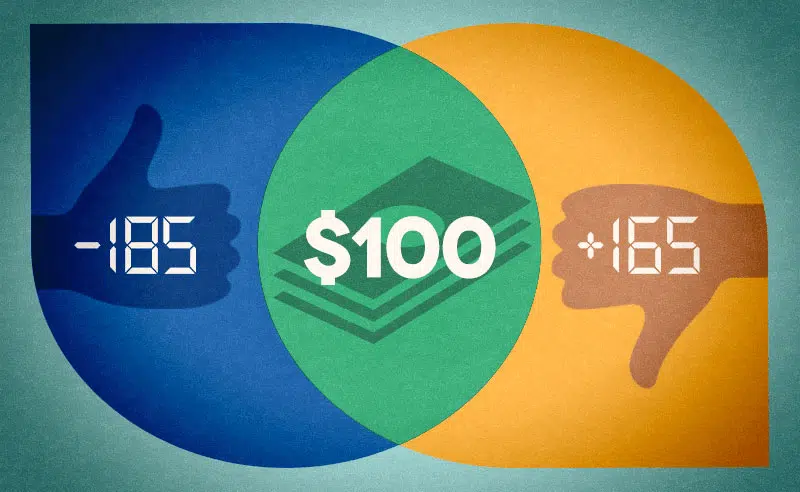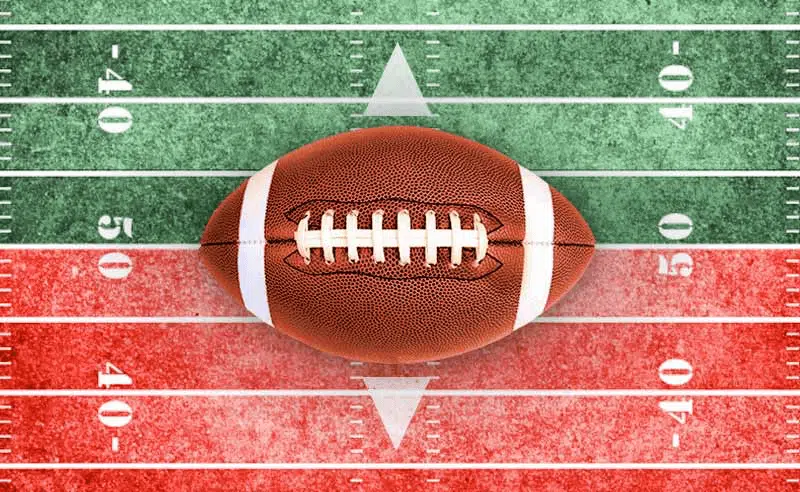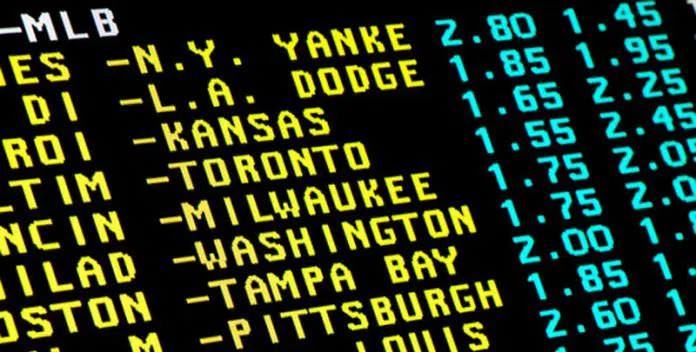Understanding the world of online betting can be a daunting task for the sports betting novice. You’re met with a wall of numbers, dots and dashes before you even get started.
The key to enjoyable betting is in knowing how to read the odds. We’ll break it all down into manageable chunks, covering the different bets and odds, and how to read them.
What Are Odds?
Before we get started, let’s take a look at what odds actually are. Odds are a set of numbers which indicate the likelihood of an event taking place. In gambling terms, the odds aren’t a true representation of probability, but show the ratio between the amount bet and the payout based on the probability calculated by the bookmakers.
Now that we have that out of the way, let’s get down to business.
The Different Types of Odds
The first thing you’ll need to be aware of is the three most common types of odds in sports wagering:
- Moneyline
- Point spreads
- Over/under betting
What do these terms mean, exactly?
The Moneyline
The moneyline wager is perhaps the simplest bet to understand. It’s a straightforward bet on who you think is going to win the game, no matter the final points or score margins.
The odds on a moneyline will normally have a plus or minus in front of a number: for example, Team A -150 or Team B +150. The minus symbol indicates the favorite to win, while the positive shows who the underdog is.
What Do the Numbers Mean?

Note: the odds are given in the American format. We’ll explain that in more detail later.
Point Spreads

If you were to just bet on the favorite each time, you could take your money and go, but this doesn’t make for a very exciting betting experience, nor would it be very profitable for the online bookmakers. The point spread makes things more interesting for bettors, as well as making a profit for the bookies.
Essentially, the point spread is a handicap given by the bookmakers to bring teams to an equal footing, in that it generates interest in both teams from bettors. With the point spread odds, you’ll bet on the score difference between the two teams.
WHAT DO These NUMBERS MEAN?
Again you’ll see the plus and minus symbols, but with smaller denominations. For example, say Team A is shown at -7, and Team B at +7. If you placed a bet on Team A, the team would have to win the game by eight or more points.
Betting on Team B would win you your bet if the team wins the game, OR if it loses by less than six points.
If you would like to learn more, be sure to read our article explaining point spread betting.
Over/ Under

It doesn’t matter who wins or loses. Instead, the bet depends on whether the combined amount is over or under a predetermined number set by the bookmaker.
If you see a bet written as 45.5 o/u, for example, this means that the bookmakers have calculated the possibility of the combined scores of the two teams as being around 45.5. The odds will often be with half points, in order to prevent what is called a ‘push’ or tie.
All you have to do is decide whether the combined scores will total over that mark, or under it. How much you are set to win from each of these bets will be decided by the bookmaker’s odds, and how much money you want to wager (more on this later).
For more info, check out our detailed explanation of over / under bets.
How to Read Odds
Now that you know the basic betting forms, you will notice that the odds given aren’t all written in the same way. Again, there are three main formats:
- American odds (+ and – )
- Decimal odds
- Fractional odds
This is where your head may start to hurt, but let’s try to keep it simple.
American Odds
American odds show how much a bettor has to risk and what they are set to win using a baseline value of $100. Let’s look at the odds of winning the NBA Championships. At the moment, the Golden State Warriors are -140, while the Cleveland Cavaliers are showing at +295. What does this mean?
Well, the Warriors are a favorite (shown by the minus symbol), so you’d have to bet $140 in order to win $100. The Cavaliers, on the other hand, are the underdog (always shown with a +), meaning if you bet $100, you’re set to win $295.
American odds are also used with the point spread bets, for example:
Team A +5 -115
Team B -5 +110
So while the point spread doesn’t change the odds given for each result, it allows the bookmakers to protect their margin or ‘juice’.
In another article, we explain how you can find out more about how bookmakers operate and how they calculate their odds.
Decimal Odds
Decimal odds are sometimes referred to as “European odds” and are used throughout Europe, Australia and Canada. If you’re interested in betting on international sports, it’s a good idea to know how they work.
Luckily, they’re very straightforward and easy to calculate. All you have to do is multiply your wager by the odds to find out your potential winnings.
Bet x Odds = Payout (original bet + profit)
For example, if you bet $100 on a team winning, with odds at 1.82, then your potential total amount received is $182. Simple.
Fractional Odds
Fractional odds are one of the oldest forms of odds in sports gambling and are more popular in the UK market. Basically fractional odds show you how much you are set to win relative to how much you put in. Again, we’ll keep this simple with an easy example. Say you make a bet of $5 on Team A to win with the odds of 2/1.
This translates as:
What you are set to profit / amount wagered = Payout (original bet + net profit)
So your bet of $5 at 2/1 odds gives you a return of $15 ($5 wagered x 2 plus the original stake of $5).
Need a Calculator Yet?
It’s a good idea to have a basic understanding of how to recognize and read each of the odds formulas, but fortunately, there are also a number of online odds converters and calculators that will do the hard work for you quickly and easily.
This comes in very handy especially when you have to recalculate when the odds change.
Why Do Odds Change?
Between the time when the betting lines open and the game starts, you’re likely to see some change in the betting odds, especially in the last few minutes. Why? There are a few reasons.
Protecting Profit
Firstly, the bookmakers may change the odds to protect their profit. Since they’ve calculated the odds carefully to give both teams equal interest, making sure they are set to gain a profit either way, if one team is getting a clear majority of the bets, then they will change the odds to make the less favored team’s odds more favorable.
Insider Info
Betting websites may change their odds as information comes to light. For example, when a team line-up is published before a game and the star players aren’t making an appearance, or perhaps news of injuries or training issues come out. These will all have an effect on the betting odds offered.
Sharp Bettors
Another reason for movement on the betting line will be the sharp bettors, those professional players who may hold off to the last minute and bet against the public opinion. They are usually big-money players and their wager can be enough to move the lines.
Knowing how to use line movement to your advantage takes time and experience, but you can get a head start with our handy guide to understanding line movement.
Ready to Play
Now that you have the basic building blocks required to understand sports betting odds, you’re ready to go. All that’s left for you to do is find the right sportsbook for you.
This can be another learning curve, but don’t worry, we’re here to help you. Just follow the link to get some great tips on how to choose the best online bookmaker.

